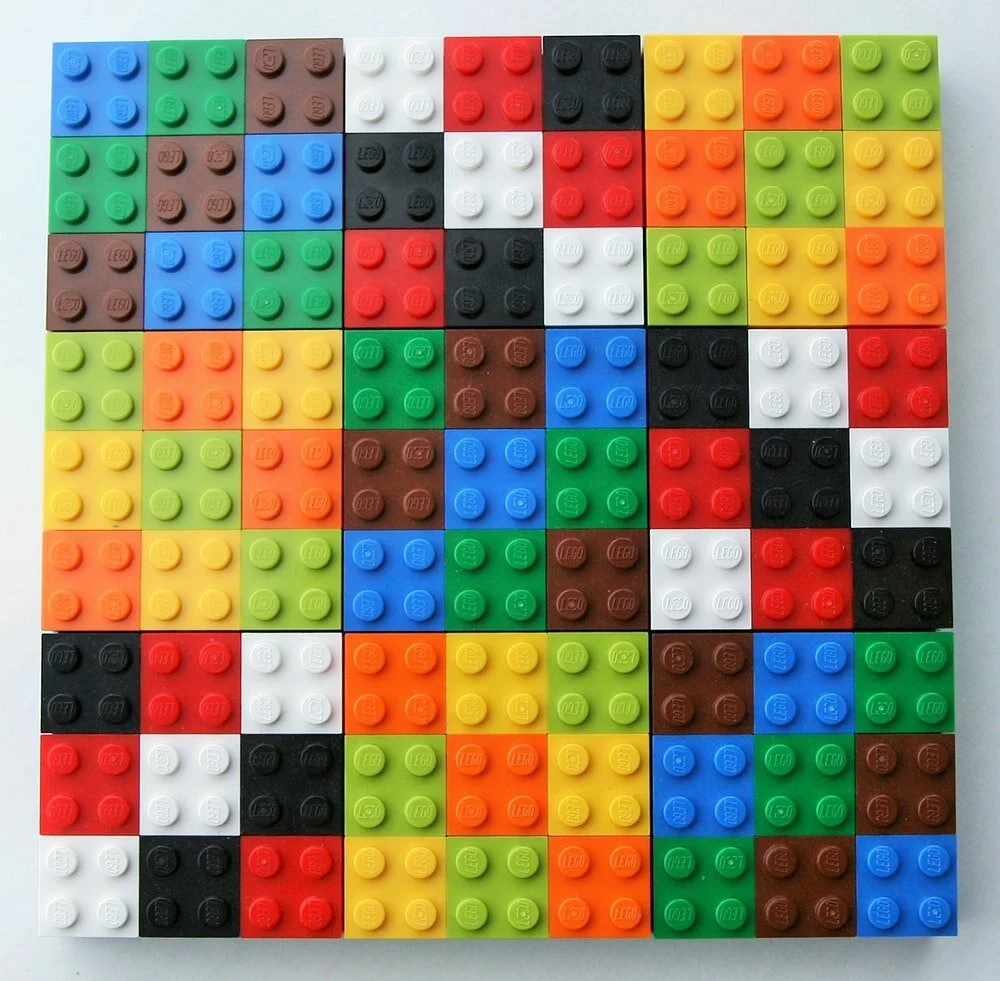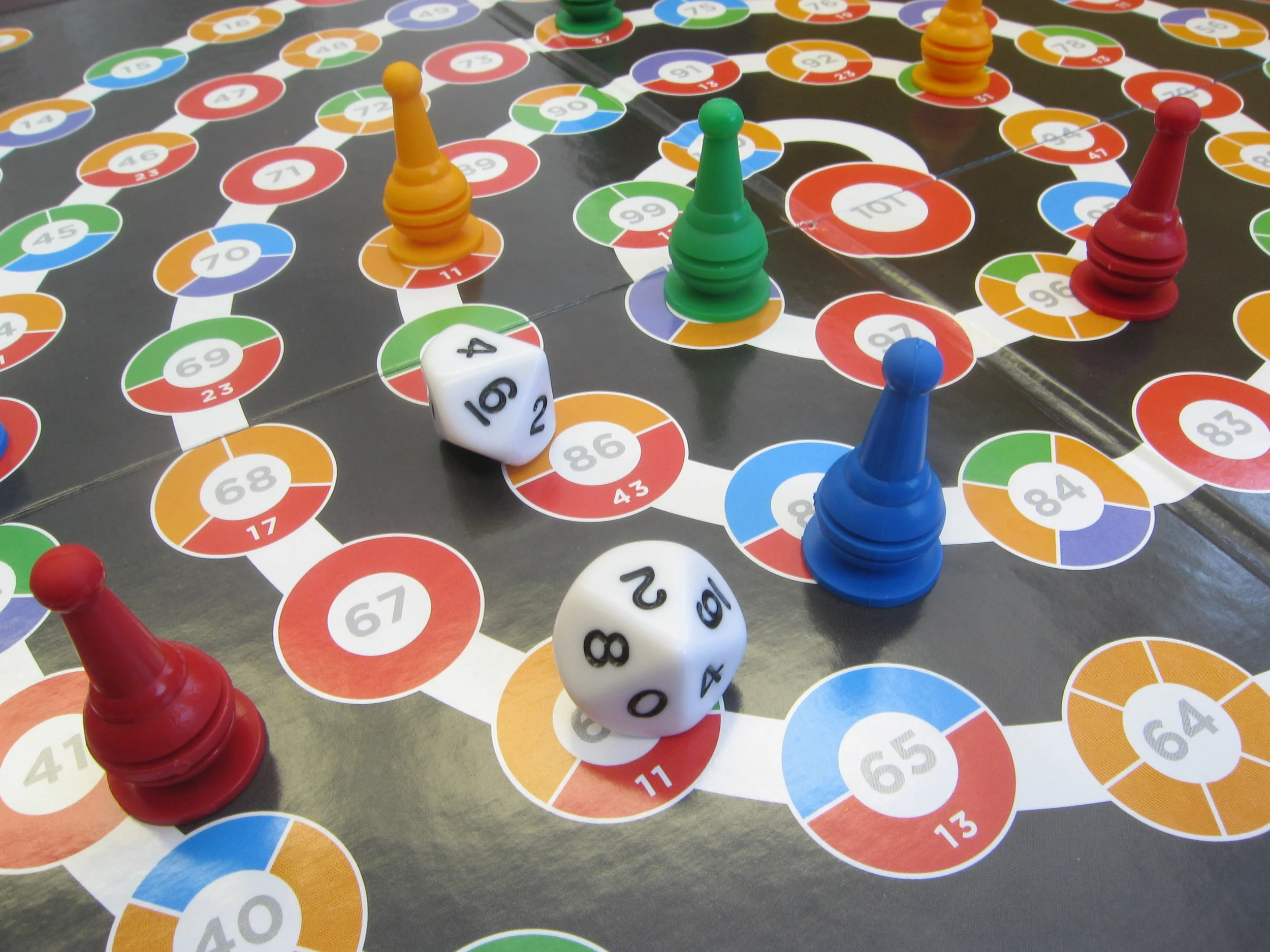My wife is so glad I started this newsletter.
There was a time when I'd spend all day on a journey through the Internet, discovering new mathematical concepts and patterns. Then I'd come home with a notebook full of drawings and a brain full of new ideas, but nobody to share them with!
Except her.
This week's newsletter is a perfect example: I started out by finding an interesting chess puzzle and ended up stumbling on a whole treasure trove of mathematical ideas.
So instead of giving you a single recommendation this week, I'll take you on a little mathematical journey, with little recommendations along the way. My wife thanks you.
(I don't even know if she reads these things, honestly. I guess I'll find out this week!)
I'll admit it: this week's game is for older kids.
I've been holding onto this game, Prime Climb, for over a year, just waiting to see when my kids would be old enough to play. I even tried a modified version with my 6-year-old son, but it just didn't work. To get to the heart of this game, you really need to know the ideas of multiplication and division. I'd recommend this game for kids who are at least in 3rd grade.
The good news is, the game is just as fun with older kids and with adults. I was able to buy a class set of Prime Climb games for my math games elective, and my 8th graders absolutely loved the game. They got to use math creatively in a way that they rarely have, and I had just as much fun as they did.
In school, math often feels like a set of procedures that you must perfectly mimic. But in Prime Climb, you are free to be as mathematically creative as you want.
I love a game where a child's intuition can lead them down a path toward a mathematical discovery. The easier the on-ramp into a mathematical game, the likelier a child is to find their own patterns and make their own discoveries.
Last week, I shared a puzzle game called Don't Connect the Dots! that provided a kid-friendly introduction to the rich mathematical world of graph theory. This week I'll be sharing another game, Map Wars, that is more deeply related to Don't Connect the Dots! than you might expect at first.
In the past I've mentioned that I am teaching an elective at my middle school that is all about math games and mathematical artwork. My students have gotten to make origami, fractals like the Sierpinski Triangle and the Koch Snowflake (pictured), and stellated icosahedrons.
Since I have 29 kids in my room, I am always looking for cost-effective games that contain math ideas. So I was elated to come upon this wonderful post by Joel David Hamkins about teaching graph theory to seven-year-olds. I adapted some of his materials and turned them into a game I call Don't Connect the Dots!
A few weeks back, I did a celebratory Q&A for my first 1000 subscribers. I had such a fun time writing my answers that I kept an eye out for other questions about games, math, and parenting.
Well, last weekend I was talking with another parent about birthday presents when they hit me with a question I just had to answer in the newsletter. So here we go!
Read MoreAlison asks:
I've noticed that you always seem to recommend games to kids who are on the younger side: the box recommends players 8 and older, but you'll recommend it for 5 or 6 year olds. Why is that? Won't the kids get frustrated by a game that's too hard for them?
Often, when I teach my kids a game, we play a couple of "face up" rounds, where everyone can see each other's cards or pieces. During the game, we talk freely about every player's options, as well as strategies that might pay off in the future.
As I've begun playing games with more and more kids, I've come to realize that face-up variations of games are just as fun! Instead of patiently waiting my turn, I am able to engage my kids in a conversation about what their possible goals might be, and how they can reach those goals.
I'd like to illustrate this idea by discussing the game Rummikub, a classic tile-based game that I was introduced to on a family beach trip this past summer.
One of my favorite parts of writing this newsletter is that I get great game recommendations all the time. A friend will text me a picture of a game they found at Target and, before you know it, I'm inventing a toilet paper shortage so I can run down to the store.
This is why free games are my (and my wife's) favorite game recommendations. And boy, do I have a great one this week.
I learned about Attribute Train from Meredith Wilkes, who shares a bunch of great moments of early math on Twitter. I immediately played the game with my older two kids, both of whom absolutely loved the game. It's now a mainstay at the Haines household.
I played a lot of classic board games as a kid, but I got sick of them eventually. It seemed like a dead hobby: once you got sick of Monopoly, Scrabble, and Risk, what else was there?
Then my uncle brought Sequence to a family gathering and I fell in love with games again. I particularly enjoyed playing in teams, trying to work together with my partner without any direct communication.
My kids are a little too young for Sequence, especially my 3-year-old. Fortunately, the makers of Sequence have come out with Sequence for Kids, a game that keeps the spirit of the original game while making the rules accessible for kids as young as three.
This week my family celebrated Rosh Hashanah, the Jewish new year, by having 32 folks over for dinner on Sunday night. It was a glorious, crazy mess, as indicated by this picture of my brain afterward (artist's rendition).
At one point I found myself in a room with kids of all ages who were starting to get very vocal with their predictions about when, if ever, the dessert was going to be served. I realized that I was in a place I've been many times as a teacher: stuck in a room with a bunch of bored, hungry kids with nothing to do.
It struck me in that moment that sometimes parents need a quick, easy multi-age game just as much as I do in my classroom! I've shared a few options in the past, such as the 100 Game or Ultimate Tic Tac Toe. But what if you need something really quick, really easy, and really fun?
Lowest Number Wins is that game.
Have your kids ever tried to "play" a book the way that they play a game?
My son has this little game with an alphabet book where he will deliberately tell me the wrong letter to make a funny word. So on the "H is for Horse" page, I ask him which letter he sees, and he'll respond "Z," which forces me to say "Z is for Zorse," at which point he falls out of the bed laughing every. Single. Time.
On other nights, my two older kids work together to recite the entirety of The Book with No Pictures by heart. Which is tough to do when you're too young to read and the book, as it advertises, has no pictures! (By the way, this book was written by Ryan from The Office, and it is hilarious. Check it out.)
And of course I've shared in the past about how my kids turned How Many?, the greatest math book of all time, into a guessing game.
These little games make bedtime into a special part of the day for me. I can get as worn down as any parent, repeating the same book word-for-word over and over. But when my kids find a little game in the middle of a book, they bring a spark of novelty that livens up the whole room.
So I'd love to share the most playable book I've ever read: Press Here.
t's a big week here at Games for Young Minds!
When I started this newsletter back in October of last year, my only goal was to write something helpful every week. I had lots of friends who were confused about how to help their children learn math, and I wanted to create some simple methods for fostering mathematical conversations. Games seemed like the perfect avenue.
Clearly, many of you shared this newsletter with friends and family members, and for that I can't thank you enough. It means a lot to me that you like the newsletter enough to share it and build the audience for these ideas.
So to celebrate you, my readers, I've devoted this week's newsletter to some reader questions! Honestly, I had so much fun writing this newsletter that I'd love to make Q&A a semi-regular feature of the newsletter. So if this newsletter sparks any questions in your mind, feel free to send them my way!
So last week, I wrote about Sum Dice, a simple and quick game that can be quite a fun introduction into the concept of fairness.
What makes a game fair? Essentially, a fair game should be one where both players have an equal chance of winning. Sometimes people like playing an unfair game, such as blackjack, because they can "beat the odds" and get the adrenaline rush of winning when they should have lost.
But mostly, people like to play fair games, and they definitely hate playing a game that seems fair but is actually rigged in one way of another.
So that's why Product Dice is such a fun and devilish game to play, once your child has played and thought about Sum Dice.












